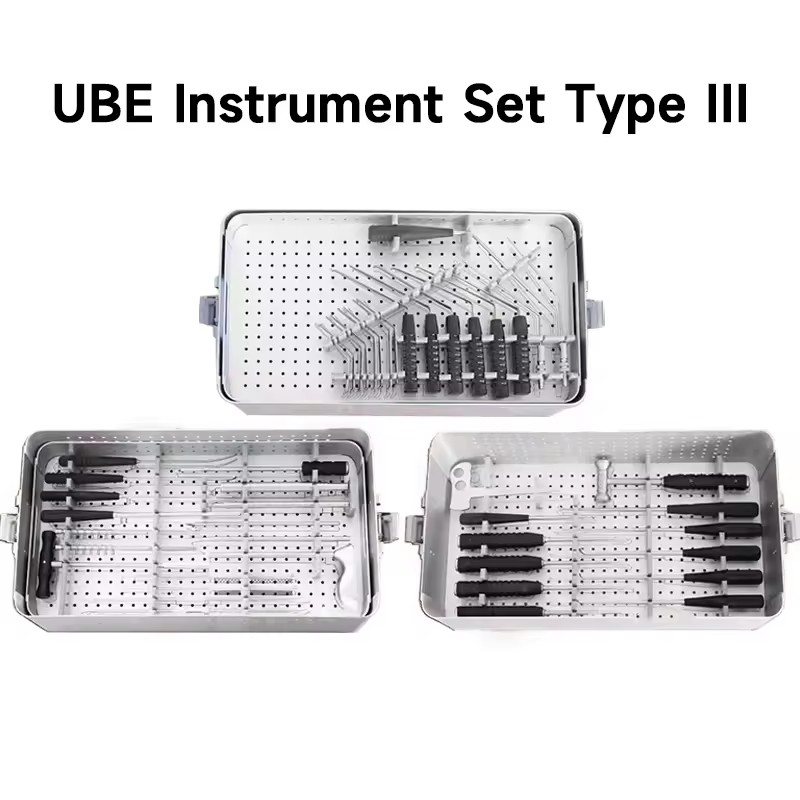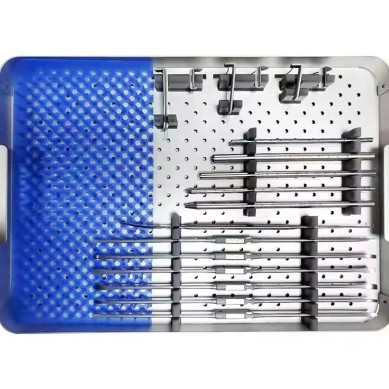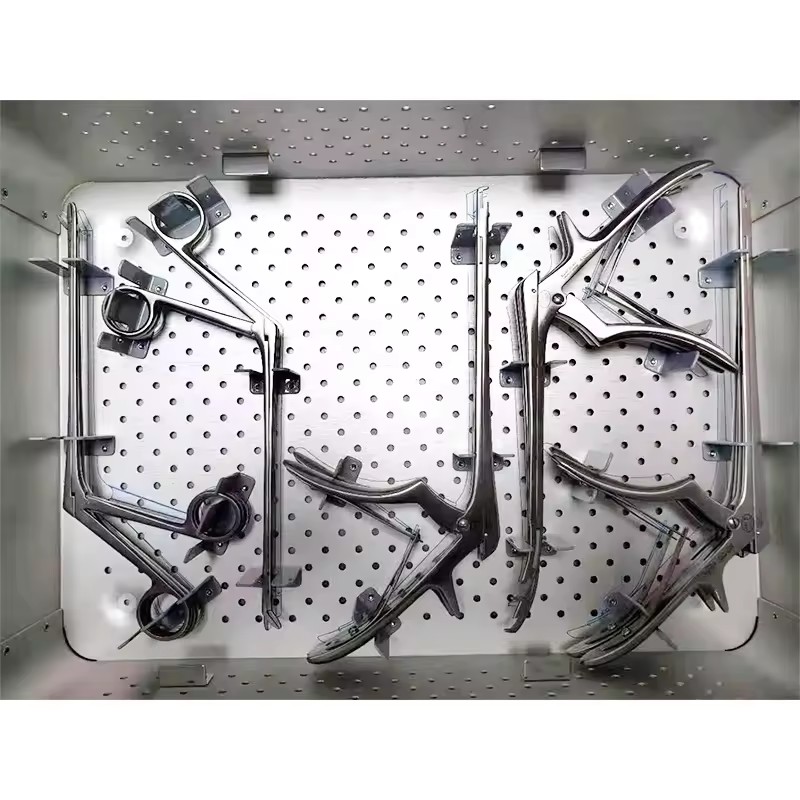By CAH Medical | Sichuan, China
For buyers seeking low MOQs and high product variety, Multispecialty Suppliers offer low MOQ customization, end-to-end logistics solutions, and multi-category procurement, backed by their rich industry and service experience and strong understanding of emerging product trends.
1.What instruments are used in Biportal endoscopic spine surgery?
The core instrument system of dual-channel endoscopic spinal surgery (UBE technology) consists of two parts: observation channel and operation channel. The specific instrument configuration is as follows:
First, observe the channel instrument.
1.UBE Primary Lens: Equipped with a 0° or 30° arthroscope for high-definition magnification of the surgical field and providing continuous irrigation .
2. Sheath/cannula: for endoscopic fixation and access protection.
3. Flush the suction tube: Connect the syringe and aspirator, remove bone debris and intraoperative bleeding.
Operation channel equipment
Basic Instrument Package: contains puncture device, expansion tube, retractor, bone retractor, stripper, curette, etc .
Special tools: UBE power system, large diameter ablation electrode, laminectomy forceps, nucleus pulposus forceps, nerve dissection device, etc .
Fusion Instrument Package: UBE dedicated cage and cage (for interbody fusion) .
Third, auxiliary system
Image positioning device: Positioning needle, circuit opener, etc. for channel establishment .
Power equipment: arthroscopic drills, radiofrequency tips, etc. for bone tissue processing and hemostasis .
The technology achieves a balance between operational flexibility and visual clarity through a dual-channel design, which is especially suitable for complex lesions such as lumbar spinal stenosis and disc herniation .
Device selection needs to be tailored to the specific type of procedure (e.g., decompression or fusion), with strict adherence to aseptic practice guidelines .
What is the work of the UBE in the body??
The role of UBE (unilateral dual-channel endoscopic spine technology) in vivo is to treat spinal diseases in a minimally invasive manner. The core mechanism includes the following aspects:
Precision lesion management
1. Through the unilateral establishment of two channels (the endoscopic channel and the instrument operation channel), the surgeon can clearly observe the internal structure of the spine and accurately remove the lesion tissue, such as the herniated intervertebral disc or the hyperplastic osteophyte.
2. This technique combines the magnifying view of endoscopy with the flexibility of traditional surgery, and is especially suitable for spinal stenosis, lumbar disc herniation, and mild lumbar spondylolisthesis
3. Minimize tissue damage .
The operation requires only two incisions of about 1 cm, and the amount of blood loss is about 10 ml. It significantly reduces the damage to muscles and ligaments, and the postoperative infection rate is low and the recovery is faster.
4. Patients often experience transient radiation pain or numbness in the lower extremities after surgery, which usually decreases with recovery .
Functional recovery advantages
Compared with traditional open surgery, patients after UBE can get out of bed early, improve nerve root adhesion and promote blood circulation through moderate exercise, and accelerate recovery .
However, there may be limitations of incomplete decompression for central disc herniation or severe spinal lesions, and individualized evaluation is needed.
Post time: Aug-28-2025













